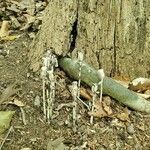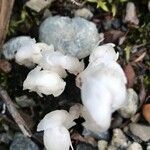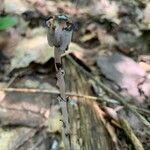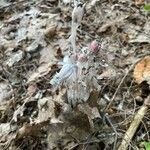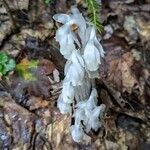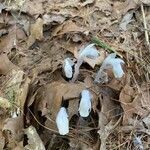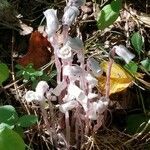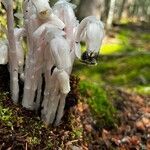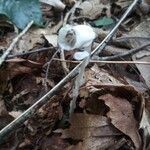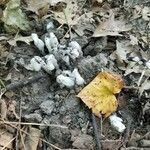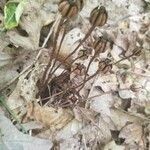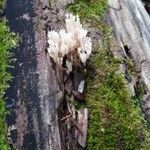Glabrous, scapose herbs, arising from perennial root masses. Scapes (5-)13-30 cm tall, 2-5 mm in diameter, terete, somewhat fleshy, striate, bracteate. Leaves (bracts) congested both basally and distally, oblong to lanceolate, 6-16(-20) mm long, (2-)3-5(-10) mm wide, apically acute, basally rounded and sessile, the margins entire or somewhat erose. Flowers solitary, nodding at anthesis, erect in fruit, perianth 5-merous; sepals 13-16 mm long, 3-7 mm wide, lanceolate, apically obtuse or acute, the margins erose; petals 5-8, 8-16(-20) mm long, (4-)5-15 mm wide, basally saccate, oblong, obovate or spatulate, apically rounded, the margins becoming erose distally; stamens (8-)10(-14), alternately slightly unequal (ca. 1 mm difference in length), the filaments terete, 11-12 mm long, the anthers reniform, appearing peltate, ca. 2 mm in diameter; stigma funnel-shaped, obscurely 5-lobed, 2-6 mm in diameter, the style short, thick, 2-7 mm long, 2-3(-5) mm in diameter; ovary 5-6-locular, globose or ovoid, ca. 7 mm long, 6 mm in diameter. Capsule ca. 11 mm long; seeds 1 mm long, spindle-shaped.
Inflorescences solitary flowers, 5-30 cm; axis white. Pedicels nodding at anthesis, erect in fruit. Flowers: sepals (3-)5(-6), similar to subtending bracts, lanceolate to oblong, 7-10 × 4-6 mm; petals (3-)5(-6), white to pinkish or reddish, obovate, 10-20 × 5-15 mm, base slightly saccate, margins entire, apex rounded or, rarely, slightly lacerate, adaxial surfaces with scattered hairs; nectary lobes 10, elongate, curved-cylindric; stamens 8-14; filaments glabrous or sparsely hairy; anthers horizontal at anthesis, transversely ellipsoid to depressed-ovoid, abaxial pair of sacs smaller; ovary 6-12 × 5-9 mm, glabrous or sparsely hairy; style 2-7 × 2-5 mm, glabrous or sparsely hairy; stigma broadly funnelform, 2-6 mm diam., not subtended by ring of crowded hairs. Capsules 5-segmented; segments persistent after seed dispersal, stout, 7-11 × 5-12 mm, often connected along margins by fine, pinnate, vascular strands. Seeds 0.5-1 mm, mostly membranously winged. 2n = 32, 48.
Stems 1–2 dm, solitary or several, waxy-white, rarely pink or red; fl solitary, nodding, odorless, 10–17 mm; sep often none; pet broadly oblong, slightly widened distally; anthers opening by 2 clefts across the top; style longer than the ovary; stigma glabrous. Rich woods; Nf. to B.C., s. to Fla., Calif., and Colombia; also e. Asia. June–Aug.
A herb. It grows on other plants. It is white and fleshy. It grows 10-30 cm high. Stems are 1.5-2 mm thick. The leaves are small like scales. They are colourless. The flowers are white and waxy. They are 2 cm long. They occur singly. They droop at the end or pale white stems. The fruit is an erect capsule with many seeds.
